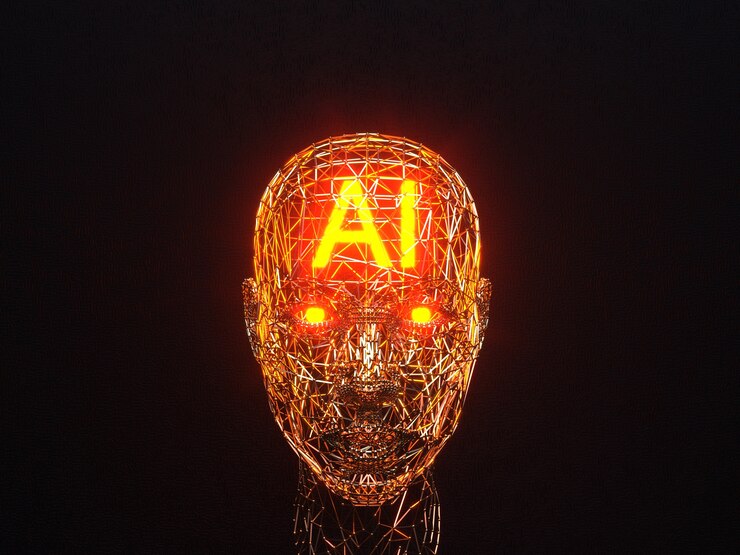AI Revolution: The Latest Innovations Shaping the great Future of Technology 2024

Introduction of AI Revolution
Revolution, in the rapidly evolving landscape of technology, artificial intelligence (AI) stands as one of the most transformative forces of our time. From autonomous vehicles to sophisticated language models, AI is reshaping industries, enhancing our daily lives, and pushing the boundaries of what technology can achieve. In this update, we’ll explore the latest breakthroughs in AI, examining how these advancements are set to influence various sectors and what they mean for the future of innovation.
1. Breakthroughs in AI Research: A New Era of Machine Learning
Recent months have seen remarkable strides in AI research, particularly in the realm of machine learning. Researchers at leading institutions have developed advanced algorithms that significantly improve the efficiency and accuracy of AI systems. One notable development is the introduction of self-supervised learning techniques, which allow AI revolution models to learn from unlabelled data without extensive human intervention. This approach not only accelerates the training process but also enhances the model’s ability to generalize from diverse datasets.
The implications of these advancements are profound. Industries such as healthcare, finance, and retail are poised to benefit from more precise predictive models, which can lead to improved decision-making and operational efficiencies. For instance, in healthcare, self-supervised learning algorithms are being used to analyze medical images with unprecedented accuracy, potentially leading to earlier detection of diseases and more effective treatments.
2. AI and Creativity: The Emergence of Generative Models
AI’s creative capabilities are reaching new heights with the advent of generative models. These sophisticated systems, including Generative Adversarial Networks (GANs) and Transformer-based models, are capable of producing original content, from art and music to literature and design. Recent advancements have enabled these models to generate highly realistic images and even compose music that rivals human-created works.
One of the most exciting developments is the use of AI revolution in collaborative creative processes. Artists and designers are increasingly turning to generative models to inspire and augment their work. For example, AI revolution-driven tools are helping fashion designers create unique clothing patterns, while musicians are using AI revolution to explore new soundscapes and composition techniques. This fusion of human creativity and AI revolution is not only expanding artistic possibilities but also opening new avenues for innovation across various creative fields.
3. Ethical AI: Addressing Bias and Promoting Fairness
As AI revolution technology becomes more integrated into society, addressing ethical considerations has become a crucial focus. One of the primary concerns is bias in AI revolution systems, which can arise from skewed training data or flawed algorithms. Recent efforts have been directed towards developing methods to detect and mitigate bias, ensuring that AI revolution systems operate fairly and impartially.
Organizations and researchers are implementing new frameworks and tools to audit AI revolution models for bias and promote transparency in their decision-making processes. For example, the introduction of fairness-aware algorithms and diverse training datasets aims to reduce disparities in outcomes across different demographic groups. These initiatives are essential for fostering trust in AI systems and ensuring that they contribute positively to society.
4. AI in Healthcare: Revolutionizing Diagnostics and Patient Care
The integration of AI in healthcare continues to make significant strides, offering promising solutions to some of the industry’s most pressing challenges. Recent advancements include the development of AI-powered diagnostic tools that can analyze medical data with high precision. For instance, AI algorithms are being used to interpret complex medical imaging, such as MRI and CT scans, with remarkable accuracy.
Additionally, AI-driven predictive analytics are enhancing patient care by identifying potential health risks before they become critical. By analyzing vast amounts of patient data, AI systems can provide personalized recommendations for preventative care and early intervention. This proactive approach not only improves patient outcomes but also helps reduce healthcare costs by minimizing the need for emergency treatments.

5. AI in Transportation: The Road to Autonomous Vehicles
Autonomous vehicles have long been a focal point of AI research, and recent developments are bringing us closer to realizing this technology on a large scale. Advances in computer vision, sensor technology, and machine learning algorithms are driving progress in self-driving cars. Companies in the automotive industry are testing and refining their autonomous systems to improve safety, efficiency, and reliability.
One notable breakthrough is the enhanced capability of AI systems to navigate complex driving environments, such as busy urban areas and challenging weather conditions. These advancements are not only paving the way for safer and more efficient transportation but also reshaping the future of mobility. As autonomous vehicles become more prevalent, they have the potential to transform urban planning, reduce traffic congestion, and lower carbon emissions.
6. The Role of AI in Climate Change Mitigation
AI is also playing a crucial role in addressing global environmental challenges, including climate change. Researchers are leveraging AI to analyze environmental data, predict climate patterns, and develop strategies for reducing carbon footprints. For example, AI-powered models are being used to optimize energy consumption in buildings and transportation systems, contributing to more sustainable practices.
Additionally, AI is aiding in the monitoring and protection of natural ecosystems. Advanced algorithms are analyzing satellite imagery to track deforestation, wildlife populations, and other environmental changes. This information is vital for informing conservation efforts and policy decisions aimed at preserving our planet’s biodiversity.
7. AI and Cybersecurity: Safeguarding Digital Assets
As cyber threats become increasingly sophisticated, AI is emerging as a critical tool for enhancing cybersecurity. AI-driven security systems are capable of detecting and responding to potential threats in real time, identifying patterns that may indicate malicious activity. Recent advancements in this area include the development of AI algorithms that can predict and prevent cyberattacks before they occur.
Furthermore, AI is being used to strengthen encryption methods and protect sensitive data from breaches. By continuously analyzing network traffic and user behavior, AI systems can provide an additional layer of defense against cyber threats, ensuring the integrity and security of digital assets.
8. The Future of AI: Opportunities and Challenges
Looking ahead, the future of AI holds immense promise, but it also presents several challenges. As AI technology continues to advance, it will be essential to address issues related to ethics, privacy, and job displacement. Ensuring that AI systems are developed and implemented responsibly will be crucial for maximizing their benefits while minimizing potential risks.
The ongoing dialogue between policymakers, researchers, and industry leaders will play a pivotal role in shaping the future of AI. Collaborative efforts to establish guidelines, regulations, and best practices will help create a balanced approach to AI development, fostering innovation while safeguarding societal values.
Conclusion
The latest developments in AI are driving significant changes across various sectors, from healthcare and transportation to climate change mitigation and cybersecurity. As technology continues to evolve, it is essential to stay informed about these advancements and their implications for the future. By embracing the opportunities presented by AI and addressing the associated challenges, we can harness its potential to create a more innovative, equitable, and sustainable world.
Stay tuned for more updates on the exciting world of artificial intelligence and other cutting-edge technologies. The future is unfolding rapidly, and there’s never been a more exciting time to be part of this transformative journey.







